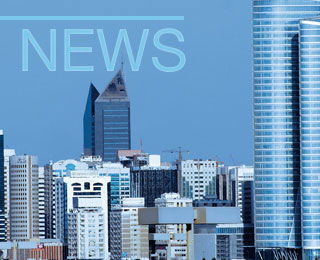Dangote Cement announced its unaudited results for the six months ended 30 June 2016. The company saw its revenue grow by 20.6 per cent to NGN292.2bn (US$925m) but lower selling prices, higher fuel costs and the impact of Pan-African plants in ramp-up phase saw its EBITDA down 10.2 per cent to NGN132.5bn. The EBITDA margin reached 45.4 per cent. Net debt stood at NGN293.3bn, giving a net gearing of 43.1 per cent.
In terms of group cement volumes, Dangote sold 59.5 per cent more cement YoY as tonnages soared to nearly 13Mt.
Onne van der Weijde, Dangote's CEO, said: “We have achieved a commendable result, given the very challenging situation in our main market and general economic weakening across Africa.”
“Following the price cut we introduced last September, sales of cement in Nigeria continued their strong momentum and reached record levels of nearly 8.8Mt, most of which was driven by smaller-scale building. We are optimistic that infrastructure investment will soon feed through to increased demand for cement from much larger construction projects. Our investment in coal is enabling us to reduce our dependence on both oil and gas as fuel sources, thus protecting our production from disruption and improving margins. The devaluation of the naira will obviously have an impact on costs and our priority will be to protect margins.”
“Across Africa we have made excellent starts and are achieving significant market shares in all of the countries in which we operate. We are taking a more measured approach to the roll-out of new capacity across Africa and remain committed to our ambitious plans to be a global force in cement production.”
Boost in revenues across the region
The company also reported strong market shares achieved in all new territories and a good start to operations in Tanzania. The Nigerian market saw record sales volumes, up 38.8 per cent to just under 8.8Mt. In west and central Africa (which includes Ethiopia since 1 January 2016), sales volumes shot up 185 per cent to nearly 2.6Mt while in southern and eastern Africa, tonnages were up 79.6 per cent to surpass the 1.6Mt mark.
Safeguarding energy security
In terms of production costs, while most production costs increased in line with a higher output, in Nigeria the limited availability of gas has resulted in the increased use of LPFO. Therefore, energy costs rose considerably from NGN27.655bn in 1H15 to NGN51.174bn in 1H16. To hedge against further difficulties in ensuring a sufficient gas supply, the cement producer is preparing to bring additional coal mills online.
Capital expenditure
Dangote invested around NGN54.6bn in project and regular capex, which represented about half of investment funds of NGN109.8bn in 1H15. Capex was mainly centred on improving its energy efficiency in Nigeria, where NGN16.74bn was invested, and plants under construction in other parts of Africa. The Republic of Congo saw the largest investment outside Nigeria as NGN16.692bn was earmarked for the central African country, followed by funds allocated to Ethiopia (NGN6.165bn) and Sierra Leone (NGN4.101bn). Zambian and Tanzanian operations benefited from investments of NGN3.901bn and NGN2.516bn, respectively.
